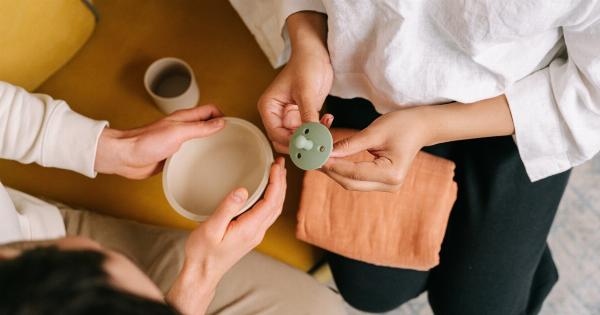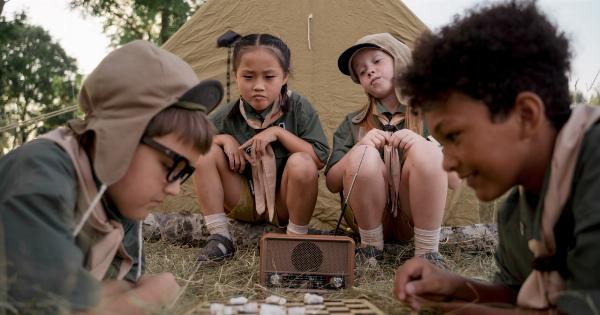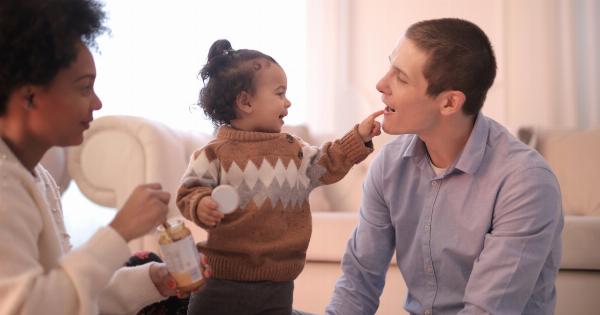Many parents find comfort in the pacifier as a tool to soothe their babies. However, there comes a time when taking away the pacifier becomes necessary for the child’s development.
Whether it’s due to dental concerns or simply a desire to move on to the next stage, saying goodbye to the pacifier can be a challenging task. In this step-by-step guide, we will explore the benefits of ditching the pacifier, the challenges that may arise, and provide helpful strategies for parents to transition their little ones away from pacifiers effectively.
Why Ditch the Pacifier?
The pacifier, also known as a binky, dummy, or soother, often provides a sense of comfort, security, and instant calming effect for babies. However, there are several reasons why parents should consider ditching the pacifier at some point:.
1. Dental Concerns
Extended pacifier use can lead to dental issues, such as malocclusion or the misalignment of teeth.
Prolonged sucking on a pacifier can cause the upper front teeth to slant outward, impacting the child’s bite and potentially requiring orthodontic intervention in the future.
2. Speech Development
Continued pacifier use can hinder speech development, as it may interfere with the baby’s ability to form sounds and practice oral motor skills.
By removing the pacifier, parents can encourage their child’s natural speech development and communication abilities.
3. Sleep Dependency
Some children become dependent on the pacifier for sleep. If the pacifier falls out during the night, they may wake up and cry until it’s replaced.
By teaching them to sleep without relying on a pacifier, parents can help their child develop healthy sleep habits and improve their self-soothing abilities.
4. Breaking Dependency
The pacifier can become a crutch for emotional regulation, and children may rely on it to calm themselves in various situations.
Encouraging them to transition away from the pacifier can help foster independence and coping skills, teaching them alternative ways to self-soothe.
Strategies for Ditching the Pacifier
Now that we understand why it’s beneficial to wean children off pacifiers, let’s explore a step-by-step guide to help parents through this transition:.
1. Choose the Right Time
Picking the right time to take away the pacifier is crucial. Avoid introducing any major changes or transitions in your child’s life, such as moving to a new house or starting daycare.
It’s best to wait until things have settled down and your child feels secure.
2. Gradual Reduction
A gradual approach often works best rather than cold turkey. Start by limiting pacifier use to specific times, such as sleep or car rides. Over time, gradually decrease these designated pacifier time slots until it’s completely eliminated.
3. Set Clear Boundaries
Explain to your child in simple terms that pacifiers are for babies and it’s time to give them up. Use age-appropriate language and reinforce the idea that they are growing up and ready for new experiences.
Encourage their sense of pride and accomplishment for reaching this milestone.
4. Replace with Alternatives
Provide alternative soothing methods or comfort objects to replace the pacifier. Examples may include a special stuffed animal, blanket, or a favorite book.
Let your child choose their new comforting item, making the transition more exciting and personalized.
5. Distract and Engage
Redirect your child’s attention towards other stimulating activities when they naturally reach for the pacifier.
Engage them in play, arts and crafts, or outdoor adventures to keep their focus away from the pacifier and introduce new ways to find comfort.
6. Consistency is Key
Consistency is crucial when it comes to ditching the pacifier. Stick to the new boundaries you’ve set and avoid giving in to tantrums or protests.
Remember that it’s a learning process for both you and your child, and consistency will help them adjust to the change more effectively.
7. Offer Rewards
Create a reward system to motivate your child during the pacifier-weaning process. Use stickers, a chart, or a small treat as positive reinforcement for every successful pacifier-free day or milestone reached.
Celebrate their progress and make it an enjoyable journey for them.
8. Nighttime Transition
Nighttime can be the most challenging part of the pacifier transition. You can gradually reduce pacifier use during sleep by helping your child develop other soothing routines.
Establish a consistent bedtime routine, such as reading a story, singing a lullaby, or cuddling, to replace the pacifier’s role in their sleep routine.
9. Support System
Enlist the support of family members, caregivers, and teachers in your child’s transition away from pacifiers. Ensure everyone is on the same page and follows the established plan consistently.
A unified approach will help your child adapt more smoothly and minimize confusion.
10. Patience and Understanding
Every child is unique, and the pacifier-ditching journey may present different challenges for each one. Be patient and compassionate towards your child during this process, as it can be emotionally difficult for them to let go of their pacifier.
Understand that setbacks may occur, and it’s important to provide comfort and reassurance along the way.
Conclusion
Transitioning away from pacifiers is a significant milestone in a child’s development. Though it may present challenges, the benefits far outweigh the temporary difficulties.
By following this step-by-step guide, parents can help their children successfully ditch the pacifier, promoting healthier dental development, speech skills, and emotional independence. Remember, it’s a journey that requires patience, understanding, and consistency. Celebrate each small victory along the way and embrace this new phase in your child’s life.




























